Peterson Bluebird Nest Box
Creator:
Marjorie Savage
A Peterson bluebird nest box in Frontenac State Park. Photo by Jacob Gaster, undated; used with permission.
.
Bibliography
Adams, Jim. “A Full-Fledged Success.” Minneapolis Star Tribune, September 5, 1993.
Berner, Kevin L. "The Peterson Box." NYS Bluebird Society, 1994.
https://nysbs.org/handouts/ThePetersonBox.pdf
“Bluebirds Are Back From the Brink Thanks to Human Interventions.” The Buzz blog (Forest Preserve District of Will County), May 2, 2023.
https://www.reconnectwithnature.org/news-events/the-buzz/bluebirds-saved-from-extinction
“Citizen-Led Bluebird Recovery.” Philanthropy Roundtable.
https://www.philanthropyroundtable.org/almanac/citizen-led-bluebird-recovery
“DNR Says Bluebird Restoration Has Hit Record Production in Minnesota.” Wadena Pioneer Journal, March 22, 1990.
Ferraro, Nick. “Obituary David Ahlgren/Pilot’s Bluebird Houses Dot Minnesota.” St. Paul Pioneer Press, November 14, 2015.
Fiedler, Dave. “Let’s Bring Back the Bluebird.” Minneapolis Tribune, March 7, 1965.
Grolla, Charles. Binesi-Dibaajimowinan: Ojibwe Bird Stories. LLTC Design and Print Shop, 2019.
Grooms, Steve, and Dick Peterson. Bluebirds! NorthWord Press, 1991.
Her, Lucy Y. “Bird Savior Dick Peterson Dies: He Developed Wooden Box That Bluebirds Could Call Home.” Minneapolis Star Tribune, May 10, 2000.
Hollis, Harold. “Bluebird Trail: Bird Club Attempts to Bring Species Back.” Duluth News-Tribune, April 17, 1955.
Janetatos, Mary D. “A History of the North American Bluebird Society.” North American Bluebird Society, 1996.
https://www.nabluebirdsociety.org/nabs-history
Juenger, Judy. “Youth Honored for Work with Bluebirds.” Albert Lea Tribune, Sept. 16, 1990.
Kern, Ben. “Bluebirds Need Homes, and He Builds ‘Em—By the Hundreds.” Minneapolis Tribune, April 4, 1982.
Koevenig, Maude M. “Nature’s World: Blue Bird Houses Get Tenants in This Area.” Albert Lea Tribune, January 18, 1953.
Schara, Ron. “Return of the Bluebirds: Local Craftsman’s House Helped in Their Recovery.” Minneapolis Star Tribune, March 24, 1991.
Scriven, Dorene. Bluebird Trails: A Guide to Success. Third edition. Bluebird Recovery Program of the Audubon Chapter of Minneapolis, National Audubon Society, 1999.
Wessel, Ann. “Volunteer’s Dedication Helps Bring Back the Bluebird.” St. Cloud Times, June 21, 2014.
Williams, Jim. “DNA Evidence Helps Trace the History of a Bird Species.” Minneapolis Star Tribune, May 18, 2022.
Zeleny, Lawrence. The Bluebird: How You Can Help Its Fight for Survival. Indiana University Press, 1976.
Berner, Kevin L. "The Peterson Box." NYS Bluebird Society, 1994.
https://nysbs.org/handouts/ThePetersonBox.pdf
“Bluebirds Are Back From the Brink Thanks to Human Interventions.” The Buzz blog (Forest Preserve District of Will County), May 2, 2023.
https://www.reconnectwithnature.org/news-events/the-buzz/bluebirds-saved-from-extinction
“Citizen-Led Bluebird Recovery.” Philanthropy Roundtable.
https://www.philanthropyroundtable.org/almanac/citizen-led-bluebird-recovery
“DNR Says Bluebird Restoration Has Hit Record Production in Minnesota.” Wadena Pioneer Journal, March 22, 1990.
Ferraro, Nick. “Obituary David Ahlgren/Pilot’s Bluebird Houses Dot Minnesota.” St. Paul Pioneer Press, November 14, 2015.
Fiedler, Dave. “Let’s Bring Back the Bluebird.” Minneapolis Tribune, March 7, 1965.
Grolla, Charles. Binesi-Dibaajimowinan: Ojibwe Bird Stories. LLTC Design and Print Shop, 2019.
Grooms, Steve, and Dick Peterson. Bluebirds! NorthWord Press, 1991.
Her, Lucy Y. “Bird Savior Dick Peterson Dies: He Developed Wooden Box That Bluebirds Could Call Home.” Minneapolis Star Tribune, May 10, 2000.
Hollis, Harold. “Bluebird Trail: Bird Club Attempts to Bring Species Back.” Duluth News-Tribune, April 17, 1955.
Janetatos, Mary D. “A History of the North American Bluebird Society.” North American Bluebird Society, 1996.
https://www.nabluebirdsociety.org/nabs-history
Juenger, Judy. “Youth Honored for Work with Bluebirds.” Albert Lea Tribune, Sept. 16, 1990.
Kern, Ben. “Bluebirds Need Homes, and He Builds ‘Em—By the Hundreds.” Minneapolis Tribune, April 4, 1982.
Koevenig, Maude M. “Nature’s World: Blue Bird Houses Get Tenants in This Area.” Albert Lea Tribune, January 18, 1953.
Schara, Ron. “Return of the Bluebirds: Local Craftsman’s House Helped in Their Recovery.” Minneapolis Star Tribune, March 24, 1991.
Scriven, Dorene. Bluebird Trails: A Guide to Success. Third edition. Bluebird Recovery Program of the Audubon Chapter of Minneapolis, National Audubon Society, 1999.
Wessel, Ann. “Volunteer’s Dedication Helps Bring Back the Bluebird.” St. Cloud Times, June 21, 2014.
Williams, Jim. “DNA Evidence Helps Trace the History of a Bird Species.” Minneapolis Star Tribune, May 18, 2022.
Zeleny, Lawrence. The Bluebird: How You Can Help Its Fight for Survival. Indiana University Press, 1976.
Chronology
1960s
Dick and Vi Peterson of Brooklyn Center notice that the population of Eastern bluebirds is declining. They begin studying the birds’ nesting patterns.
1971
The National Audubon Society establishes its Blue List to identify bird species experiencing serious losses. The Eastern bluebird is on the list in 1972 and from 1978 to 1982.
1978
Dick Peterson asks the Audubon Chapter of Minneapolis to help him fill requests for nest box designs. The partnership results in the formation of the Bluebird Recovery Program of Minnesota, a committee of the Audubon Chapter of Minneapolis.
1979
The Audubon Chapter of Minneapolis presents Dick and Vi Peterson with an award for their “outstanding and dedicated efforts to save the Eastern bluebird.”
1979
The US Fish and Wildlife Service Breeding Bird Survey ranks Eastern bluebirds as “very rare” in most of Minnesota.
1980
Minnesota’s Nongame Wildlife Checkoff law is passed. Minnesotans can now support Minnesota’s wildlife by donating to the Nongame Wildlife Fund when they file their state taxes.
1982
150 volunteers raise 1,409 bluebird fledglings in a project sponsored by Minnesota’s Department of Natural Resources Nongame Wildlife Program.
1989
A record 15,879 bluebirds are fledged in the Department of Natural Resources Nongame Wildlife Program.
1992
A national bird survey shows a 70 percent increase of the Eastern bluebird population since 1982.
1999
Vi Peterson dies on March 28 at the age of eighty-four.
2000
Dick Peterson dies on May 4, 2000, at North Memorial Medical Center in Robbinsdale. He is eighty-one years old.
2019
The Bluebird Recovery Program of Minnesota separates from the Audubon Chapter of Minneapolis, and becomes an independent 501(c)(3) not-for-profit organization.
2025
The Bluebird Recovery Program drops “recovery” from its name and operates as the Bluebird Program of Minnesota.
Bibliography
Adams, Jim. “A Full-Fledged Success.” Minneapolis Star Tribune, September 5, 1993.
Berner, Kevin L. "The Peterson Box." NYS Bluebird Society, 1994.
https://nysbs.org/handouts/ThePetersonBox.pdf
“Bluebirds Are Back From the Brink Thanks to Human Interventions.” The Buzz blog (Forest Preserve District of Will County), May 2, 2023.
https://www.reconnectwithnature.org/news-events/the-buzz/bluebirds-saved-from-extinction
“Citizen-Led Bluebird Recovery.” Philanthropy Roundtable.
https://www.philanthropyroundtable.org/almanac/citizen-led-bluebird-recovery
“DNR Says Bluebird Restoration Has Hit Record Production in Minnesota.” Wadena Pioneer Journal, March 22, 1990.
Ferraro, Nick. “Obituary David Ahlgren/Pilot’s Bluebird Houses Dot Minnesota.” St. Paul Pioneer Press, November 14, 2015.
Fiedler, Dave. “Let’s Bring Back the Bluebird.” Minneapolis Tribune, March 7, 1965.
Grolla, Charles. Binesi-Dibaajimowinan: Ojibwe Bird Stories. LLTC Design and Print Shop, 2019.
Grooms, Steve, and Dick Peterson. Bluebirds! NorthWord Press, 1991.
Her, Lucy Y. “Bird Savior Dick Peterson Dies: He Developed Wooden Box That Bluebirds Could Call Home.” Minneapolis Star Tribune, May 10, 2000.
Hollis, Harold. “Bluebird Trail: Bird Club Attempts to Bring Species Back.” Duluth News-Tribune, April 17, 1955.
Janetatos, Mary D. “A History of the North American Bluebird Society.” North American Bluebird Society, 1996.
https://www.nabluebirdsociety.org/nabs-history
Juenger, Judy. “Youth Honored for Work with Bluebirds.” Albert Lea Tribune, Sept. 16, 1990.
Kern, Ben. “Bluebirds Need Homes, and He Builds ‘Em—By the Hundreds.” Minneapolis Tribune, April 4, 1982.
Koevenig, Maude M. “Nature’s World: Blue Bird Houses Get Tenants in This Area.” Albert Lea Tribune, January 18, 1953.
Schara, Ron. “Return of the Bluebirds: Local Craftsman’s House Helped in Their Recovery.” Minneapolis Star Tribune, March 24, 1991.
Scriven, Dorene. Bluebird Trails: A Guide to Success. Third edition. Bluebird Recovery Program of the Audubon Chapter of Minneapolis, National Audubon Society, 1999.
Wessel, Ann. “Volunteer’s Dedication Helps Bring Back the Bluebird.” St. Cloud Times, June 21, 2014.
Williams, Jim. “DNA Evidence Helps Trace the History of a Bird Species.” Minneapolis Star Tribune, May 18, 2022.
Zeleny, Lawrence. The Bluebird: How You Can Help Its Fight for Survival. Indiana University Press, 1976.
Berner, Kevin L. "The Peterson Box." NYS Bluebird Society, 1994.
https://nysbs.org/handouts/ThePetersonBox.pdf
“Bluebirds Are Back From the Brink Thanks to Human Interventions.” The Buzz blog (Forest Preserve District of Will County), May 2, 2023.
https://www.reconnectwithnature.org/news-events/the-buzz/bluebirds-saved-from-extinction
“Citizen-Led Bluebird Recovery.” Philanthropy Roundtable.
https://www.philanthropyroundtable.org/almanac/citizen-led-bluebird-recovery
“DNR Says Bluebird Restoration Has Hit Record Production in Minnesota.” Wadena Pioneer Journal, March 22, 1990.
Ferraro, Nick. “Obituary David Ahlgren/Pilot’s Bluebird Houses Dot Minnesota.” St. Paul Pioneer Press, November 14, 2015.
Fiedler, Dave. “Let’s Bring Back the Bluebird.” Minneapolis Tribune, March 7, 1965.
Grolla, Charles. Binesi-Dibaajimowinan: Ojibwe Bird Stories. LLTC Design and Print Shop, 2019.
Grooms, Steve, and Dick Peterson. Bluebirds! NorthWord Press, 1991.
Her, Lucy Y. “Bird Savior Dick Peterson Dies: He Developed Wooden Box That Bluebirds Could Call Home.” Minneapolis Star Tribune, May 10, 2000.
Hollis, Harold. “Bluebird Trail: Bird Club Attempts to Bring Species Back.” Duluth News-Tribune, April 17, 1955.
Janetatos, Mary D. “A History of the North American Bluebird Society.” North American Bluebird Society, 1996.
https://www.nabluebirdsociety.org/nabs-history
Juenger, Judy. “Youth Honored for Work with Bluebirds.” Albert Lea Tribune, Sept. 16, 1990.
Kern, Ben. “Bluebirds Need Homes, and He Builds ‘Em—By the Hundreds.” Minneapolis Tribune, April 4, 1982.
Koevenig, Maude M. “Nature’s World: Blue Bird Houses Get Tenants in This Area.” Albert Lea Tribune, January 18, 1953.
Schara, Ron. “Return of the Bluebirds: Local Craftsman’s House Helped in Their Recovery.” Minneapolis Star Tribune, March 24, 1991.
Scriven, Dorene. Bluebird Trails: A Guide to Success. Third edition. Bluebird Recovery Program of the Audubon Chapter of Minneapolis, National Audubon Society, 1999.
Wessel, Ann. “Volunteer’s Dedication Helps Bring Back the Bluebird.” St. Cloud Times, June 21, 2014.
Williams, Jim. “DNA Evidence Helps Trace the History of a Bird Species.” Minneapolis Star Tribune, May 18, 2022.
Zeleny, Lawrence. The Bluebird: How You Can Help Its Fight for Survival. Indiana University Press, 1976.













.jpg?width=200&height=200&name=Bluebird_on_box_PRNWR_Poole%2c_Matt_USFWS_4-2021_(51145156213).jpg)

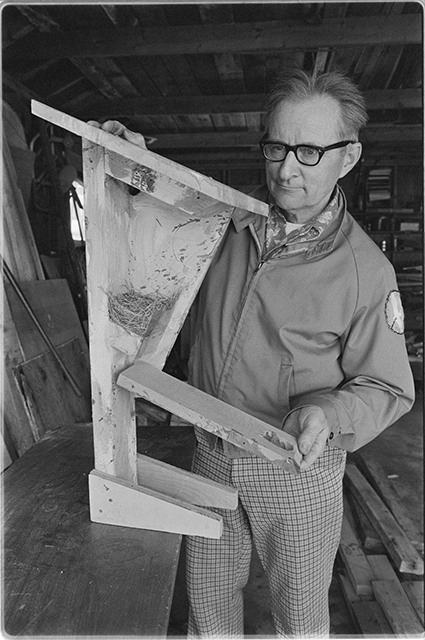
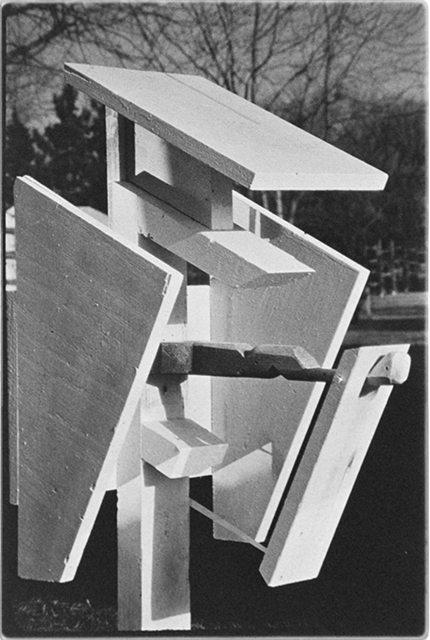
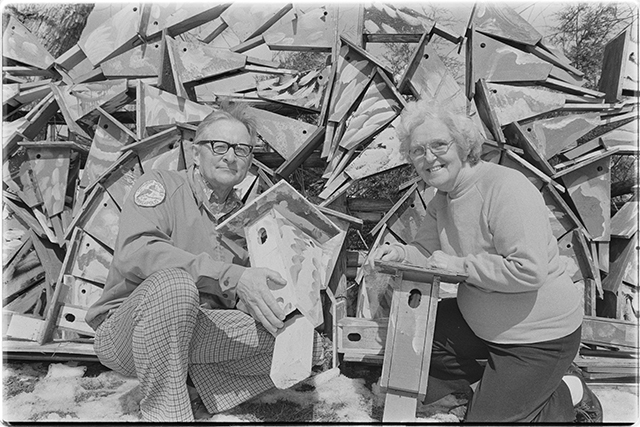
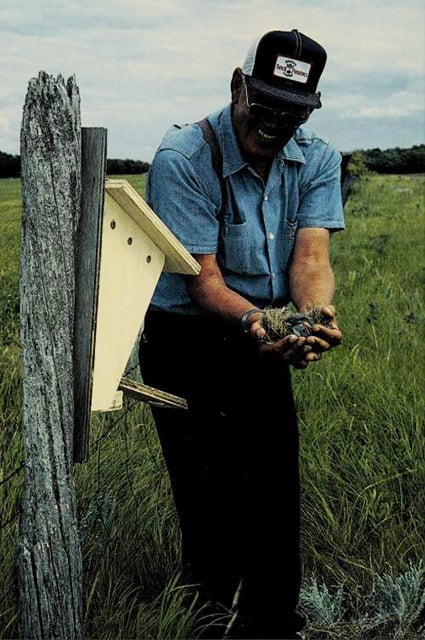
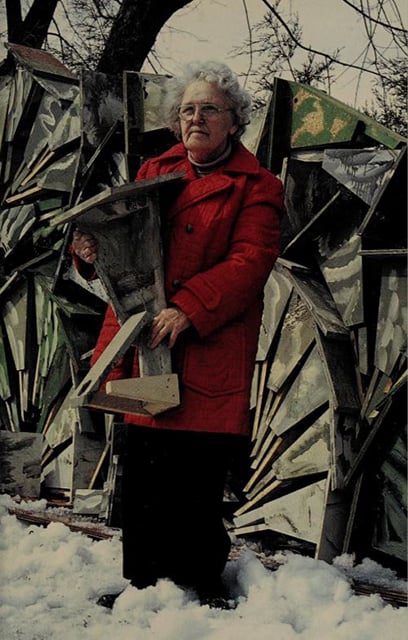

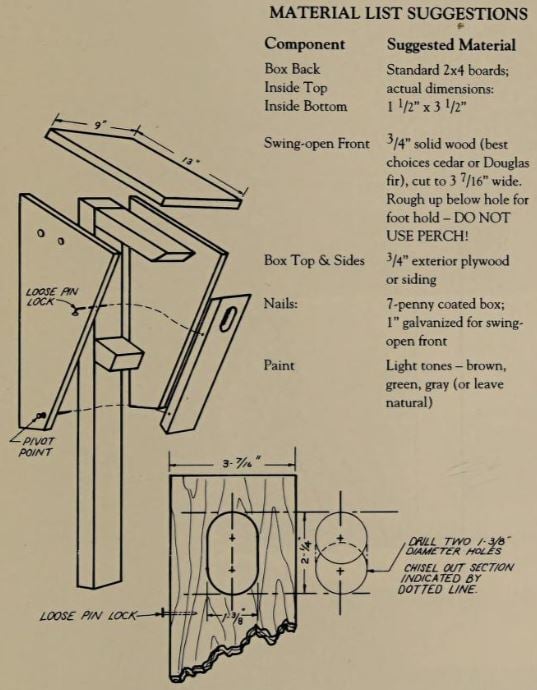


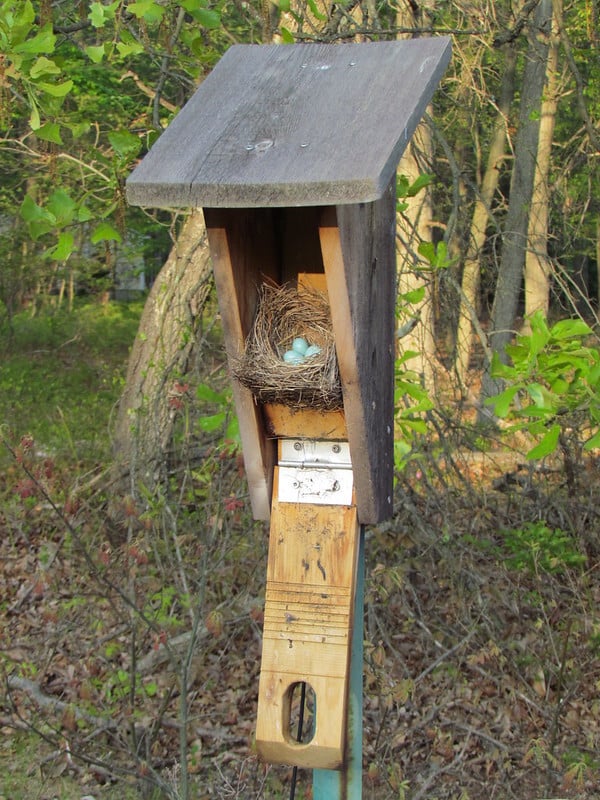
.jpg)